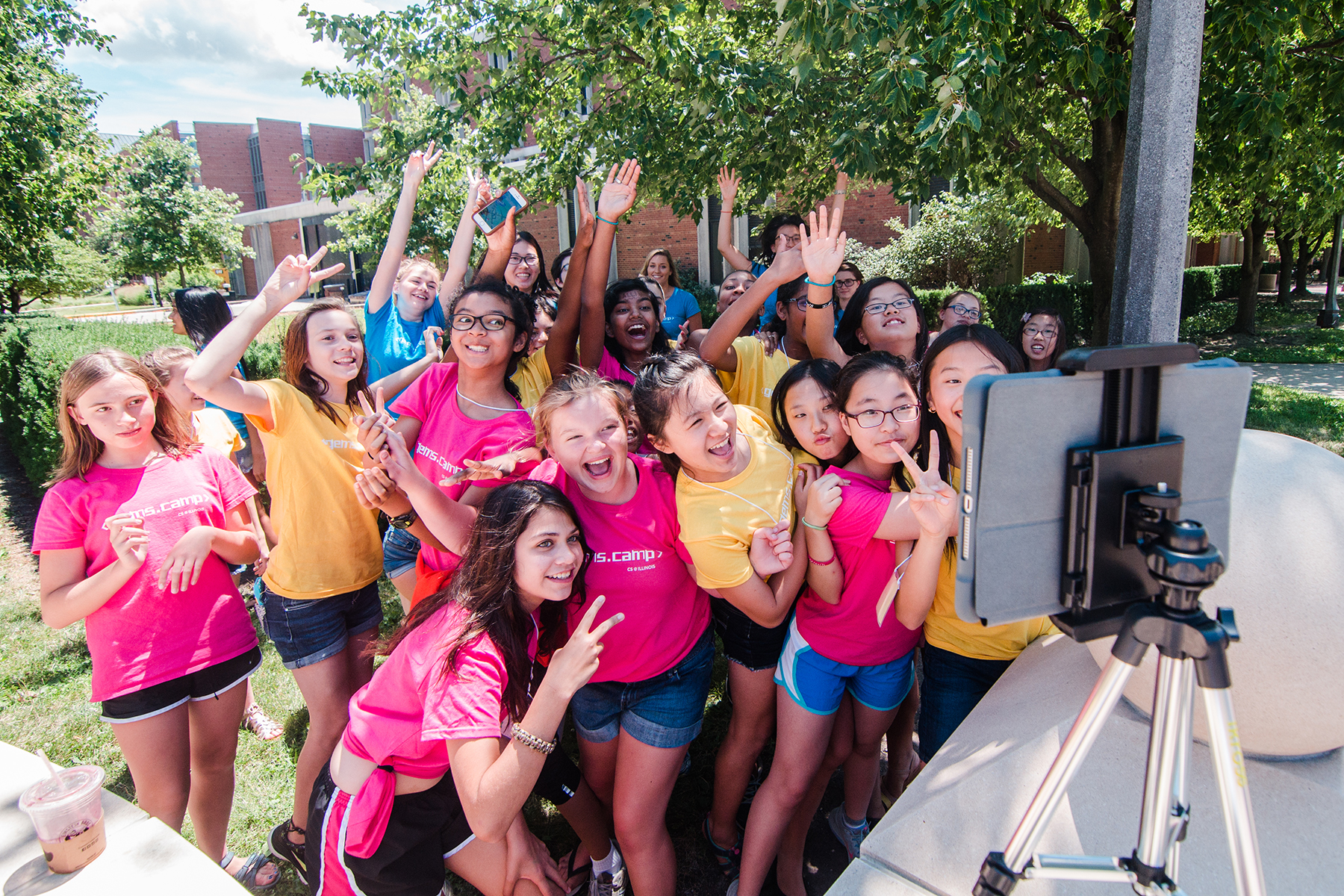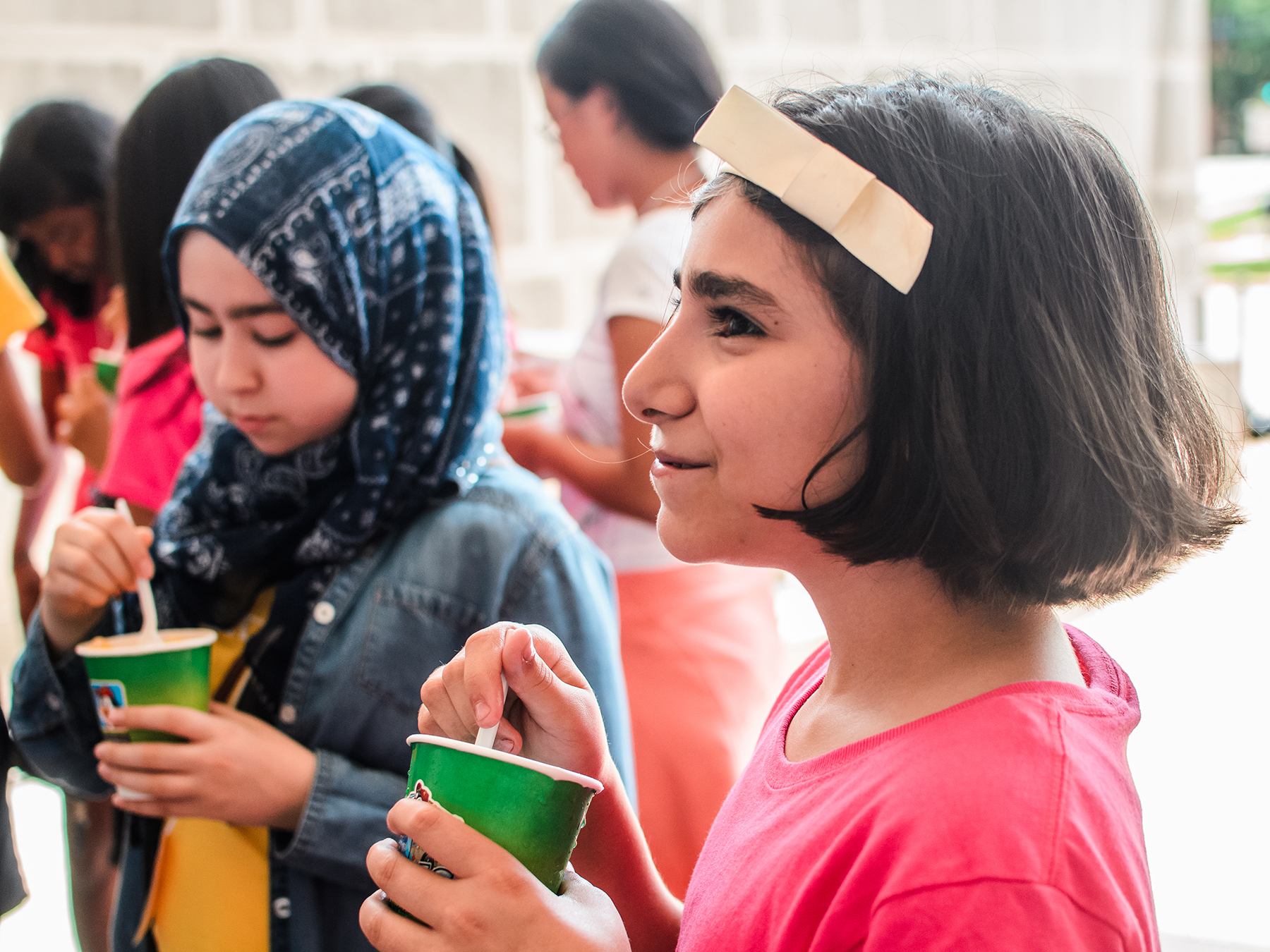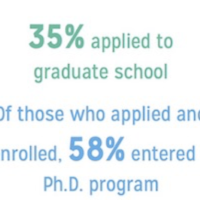Expanding the Pipeline: Toward Gender Parity in CS @ ILLINOIS
This article outlines several activities at University of Illinois Urbana-Champaign (UIUC) geared towards encouraging women to join and stay in a computing major. As the authors note, the link between UIUC’s efforts and the uptick in women in computing at UIUC is speculative, as no formal evaluation has been conducted. Nevertheless, the level of engagement in broadening participation in computing at UIUC is encouraging. Of note, UIUC is one of many computing departments and organizations working to increase the representation of women in computing courses and majors. This article is the first in a series highlighting some of these departments.
The CS undergraduate program at the University of Illinois is among the largest in the nation. It has grown by 250 percent over the last decade to nearly 1,800 undergraduates—and it is still growing. In the last four years, the percentage of women in our CS programs rose from 10 percent to more than 25 percent. And our freshmen class in the College of Engineering rose from 11 percent women in 2012 to about 45 percent in 2016.
This article gives a brief overview of our decade-long journey, describing our multifaceted approach to recruitment and retention of women in CS. The “tl;dr” (too long; didn’t read) version is this: we tried everything, and it has been working for us.
Our Recruitment Strategies
At the University of Illinois, students select a major upon application to the university. Thus, we have three recruitment opportunities: increase the pool of women applying to CS, increase the number of highly qualified women admitted to the program, and increase the number of admitted women accepting our admission offer.

Priten Vora, UIUC student
Increase the pool of female applicants
Outreach efforts
We have a long history of efforts to increase our applicant pool by “filling the pipeline” through the K-12 levels. Funding of Broadening Participation grants from the National Science Foundation, corporate sponsors, and alumni has allowed us to develop numerous outreach programs. A few are mentioned below. Additional programs and more details are available at https://cs.illinois.edu/engage/k-12-outreach.
- ChicTech visits to high schools bring members of the Women in Computer Science (WCS) student club to explain and demystify CS to students. A ChicTech retreat weekend for high school girls provides an introduction to CS in general and to Illinois in particular.
- GEMS is a collection of free day camps for middle-school and high-school girls that introduce them to the breadth of computing and its applications. This summer’s camps had more than 200 participants.
- GAMES residential camp offers a week-long CS track for high school girls, focusing on programming, robotics, and careers.
We’ve seen a number of participants enroll as undergraduates and later help run these same programs.
Programmatic Change
Over the last 10 years we’ve focused on systemic change to attract students with broader interests. Specifically, we have increased avenues to engage in computing outside of the Engineering College by creating new, joint programs across campus.
Following the success of an applied Informatics Minor in 2008 that enjoyed over 50 percent female participation, we began developing “CS+X” majors within the College of Liberal Arts and Sciences (LAS) in 2010 to provide students with a strong computing foundation coupled with advanced work in an LAS discipline. Not a double major (too much) or a minor (too little), we believe it is “just right,” and ensures that students know enough CS to secure traditional CS jobs, and enough X to be able to contribute meaningfully to that other discipline. Our first four were CS+Anthropology, CS+Astronomy, CS+Chemistry, and CS+Linguistics, which began admitting freshmen in fall 2014. Roughly 30 percent of enrolling majors have been women. Enrollments relative to departments X are significant: CS+Linguistics, for example, comprises approximately one-third of all Linguistics majors. Thanks to a high interest throughout the university, we will continue to expand the portfolio.
Increase the number of highly qualified women admitted to the program
Considering research on stereotype threat and unconscious bias, both which could cause bias against female applicants, we’ve worked with the University Admissions Office, which makes all admission decisions, to better identify qualified female applicants. We’ve stressed to admissions the importance of a diverse class and that qualities we value can manifest in various ways such as leadership demonstrated through activities other than just a high school’s coding club. After checking frequency distributions of high school GPAs, and test scores of admitted males and females in 2015, we noted women had higher qualifications than men, indicating a subconscious “raising of the bar” for the women. In 2016, the distributions were comparable and the number of female admits increased dramatically. These students are doing well in their classes, with a smaller percentage of women than men receiving a grade lower than C in the CS1 class.

Priten Vora, UIUC student
Increase the number of admitted women who accept our offer of admission
Several years ago we began inviting all accepted women to visit and subsidized their travel. The “Visit WCS” program involves presentations, “speed-nerding” with WCS members, CS unplugged activities, department tours, sitting in on introductory classes, and a panel discussion with female faculty. Parents are included in some of the activities, and we host a parent lunch with the CS department’s administration.
This program is coupled with the student-run SAIL program, in which our students invite all admitted students to campus for fun mini-classes offered by our own undergraduates. Besides other initiatives by the university, we also connect with admitted women through social media and direct connection with WCS members to answer prospective students’ questions.
Prompted by our work with the National Center for Women & Information Technology, we surveyed all first-year students on the different ways they engaged with us. The results confirmed our intuition that “if you know us, you’ll like us.” The most significant factors that helped them decide to enroll involved personal engagement such as the WCS visit, attending an on-campus presentation, or interactions with students, faculty, or advisors.
Retention Strategies
In 2006, we commissioned a study of the CS department’s culture in terms of perceived attitudes about women that helped shape some of our retention efforts:
- Train teaching assistants (TAs). Students’ experiences with TAs were sometimes unhelpful, and a semester-long seminar focusing on everything from pedagogy to logistics was created and required for all new TAs.
- Train faculty. All new CS faculty are expected to participate in Illinois’ Academy for Engineering Education’s “Collins Scholars program.” As our lower-level courses have grown dramatically, we’ve embraced professional teaching faculty to help design and deliver core courses. A teaching professor track was created by the university, helping us attract dedicated and inspirational educators. Introductory courses have become more engaging, more active, and more relevant. Student evaluations are typically among the highest on campus, with teaching faculty winning college, campus, and external teaching awards, and external evaluators commenting on the high regard the students have for these courses.
- Incorporate more collaborative learning environments. Many courses have adopted more group work. For instance, we’ve added weekly group problem-solving sessions to several of our core courses.
- Improve mentoring. Not all undergraduates were connected with a faculty advisor, and those who were mostly used them for selecting courses. We have since moved to a three-tiered approach to advising: 1) Professional advisors help students with course selection and department policies; 2) All students are assigned a faculty mentor, with whom they meet at least yearly (but ideally more frequently). The relationship focuses on more strategic questions about education and life trajectory; and 3) Through the Piazza platform, we have monitored peer advising, so experienced students can offer advice to younger students.
- Inculcate a feeling of belonging and community. We’ve worked tirelessly on this, and support the student community in myriad ways. We have several very large and active student groups, including WCS, Association for Computing Machinery, and a Latino/a club, which we support financially and give prime real estate in the building. We encourage and support numerous events, and help groups find corporate sponsors for technical projects and social events. The default departmental response to a student initiative is “How can we help?” For example, students proposed a hackathon. This was launched as HackIllinois several years ago and recently saw participation by more than 1,500 students nationwide, with our students raising over $250,000 of corporate funding to support the event.
We have an Outreach & Inreach committee of students and faculty, which fosters participation by current students in department activities and proposes new events. Participation in outreach programs increases feelings of belonging with the volunteers. Examples of Inreach activities include surprise pop-up snack breaks and department-wide social events such as a trivia or casino night.
We have strengthened ties to college efforts, including the Women in Engineering Orientation (a 2.5-day pre-move-in program for incoming women). Participants were 30 percent more likely to graduate in engineering. And we have supported tutoring for CS classes at the Center for Academic Resources in Engineering (CARE).
With these programs, the retention rate of women and men has equalized. In addition, there isn’t a statistically significant difference between male and female graduation rates.
Summary
It is difficult to determine the relative contribution of each of these approaches resulting in increased percentages of women in our programs (in part because we need further evaluation data). If there is a key takeaway to this story, it is this: With dozens of dedicated people attacking the challenge of increasing women’s participation from every reasonable angle over a sustained period, significant progress can be achieved.
About the Authors
Cinda Heeren is a senior instructor in the CS department at the University of British Columbia, and past teaching professor of CS at the University of Illinois at Urbana-Champaign (UIUC). Susan Larson is assistant dean in the College of Engineering at UIUC, and Lenny Pitt is associate head and director of undergraduate programs in the CS department at UIUC.









